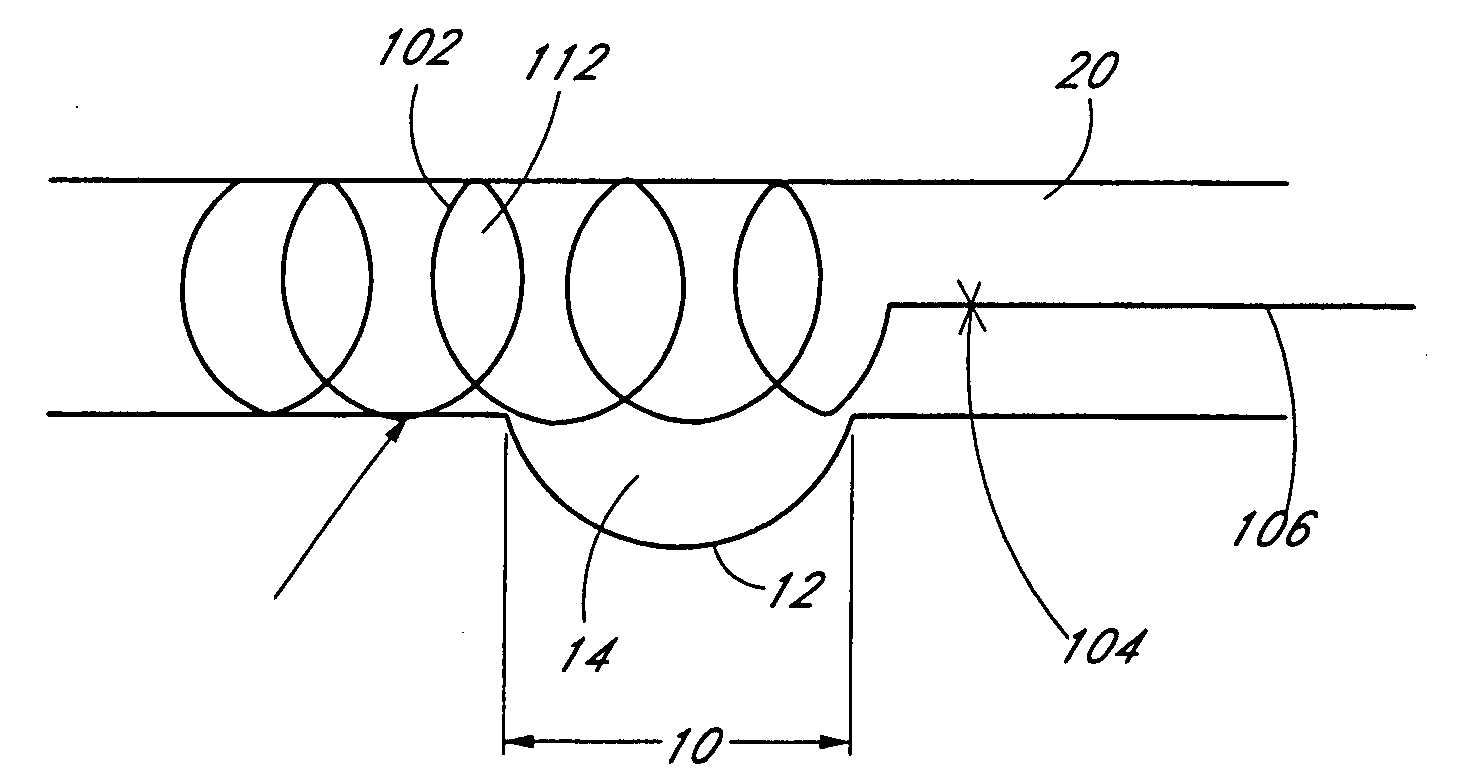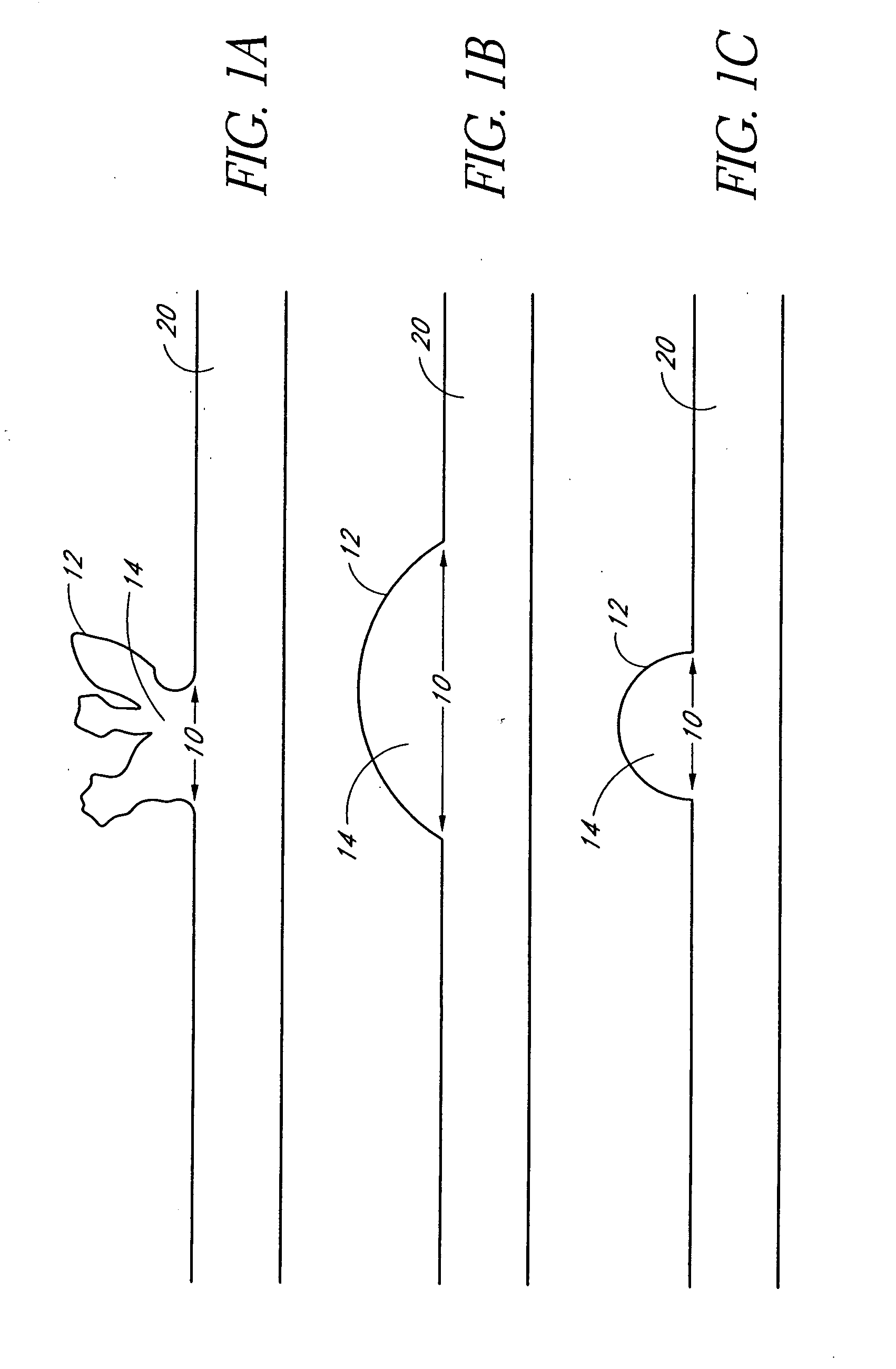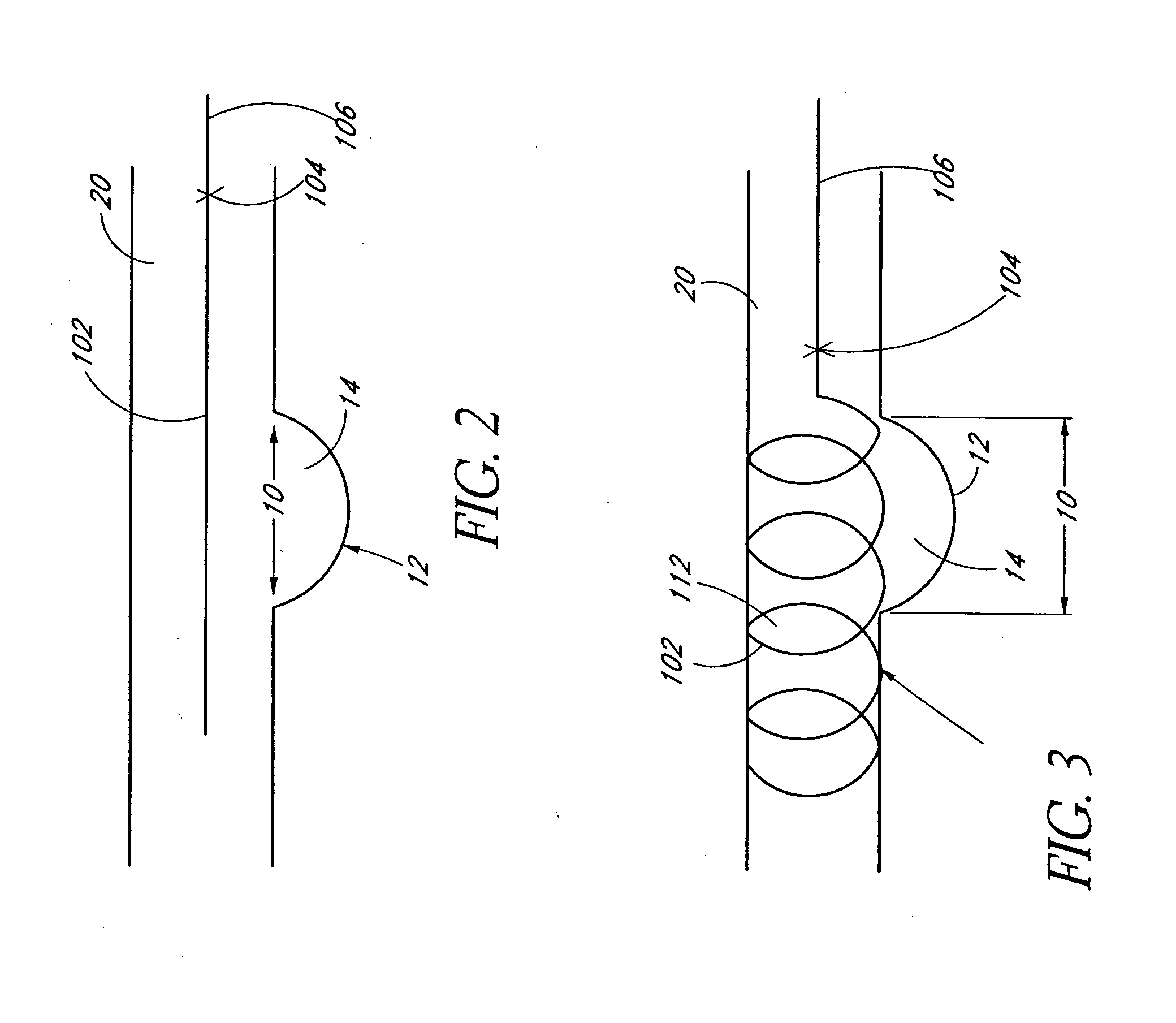Dynamically adjustable vascular stent
a vascular stent, dynamic technology, applied in the field of vascular stents, can solve the problems of incomplete filling of aneurysms, stretching of the aneurysm wall, and not being ideally suited to selective occlusion of aneurysms and preservation of the patency of the parent artery
- Summary
- Abstract
- Description
- Claims
- Application Information
AI Technical Summary
Benefits of technology
Problems solved by technology
Method used
Image
Examples
Embodiment Construction
[0027]The present invention involves systems and methods for providing a dynamically remodelable vascular stent to provide a protective framework for treating aneurysms with embolic coils and preventing mitigation of the embolic coils from the aneurysms. In certain embodiments, a dynamically remodelable stent is delivered into the blood vessel patient such as a human or other animal, and positioned adjacent an aneurysm. The dynamically remodelable stent may be implanted percutaneously (e.g., via a femoral artery or vein, or other arteries or veins) as is known to someone skilled in the art. The dynamically remodelable stent is activated to assume an expanded shape and thereby provide a protective framework spanning the neck, or ostium, of the aneurysm during and after delivery of embolic devices, such as embolic coils, to the aneurysm. The embolic coils may then be delivered through the framework of the stent to the aneurysmal cavity in order to thrombose and occlude the aneurysm, t...
PUM
 Login to View More
Login to View More Abstract
Description
Claims
Application Information
 Login to View More
Login to View More - R&D
- Intellectual Property
- Life Sciences
- Materials
- Tech Scout
- Unparalleled Data Quality
- Higher Quality Content
- 60% Fewer Hallucinations
Browse by: Latest US Patents, China's latest patents, Technical Efficacy Thesaurus, Application Domain, Technology Topic, Popular Technical Reports.
© 2025 PatSnap. All rights reserved.Legal|Privacy policy|Modern Slavery Act Transparency Statement|Sitemap|About US| Contact US: help@patsnap.com



